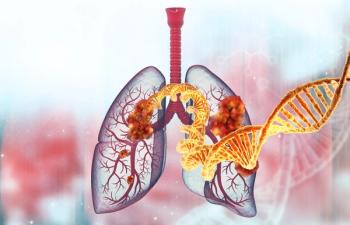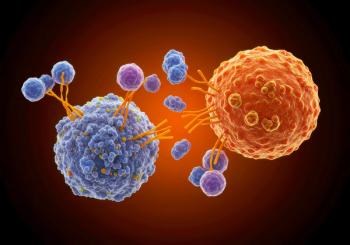
Novel Technique Mimics Immune Systems of HIV Elite Controllers
The findings could lead to speed the development of an HIV vaccine.
Scientists have developed a novel method to rapidly analyze and sort HIV viruses in quantities. The technique could help speed up the development of an HIV vaccine.
An estimated 1% of patients with HIV can survive without antiretroviral treatment, and are referred to as
One of the challenges in creating a vaccine for HIV is to identify specific features in the proteins on the surface of the virus that the immune system can recognize and elicit a response.
Fluorescence-activated cell sorting (FACS) is a widely-used technique to examine proteins on the cells’ surfaces. This method can be used successfully in cells and large viruses, such as the Ebola virus. However, FACS is not sensitive enough to study smaller viruses with fewer surface proteins, such as HIV.
In a study published in Cell Chemical Biology, investigators developed a system that allows them to analyze and sort hundreds of HIV viruses per second and separate them depending on whether their surface proteins have features recognized by specific antibodies.
“Instead of using fluorescent antibodies that would bind directly to the viral proteins—–producing only a weak signal––we took the ordinary, non-fluorescent antibodies and attached them to an enzyme called alkaline phosphatase (AP),” said study author Christoph Merten.
The investigators then individually enclosed the viruses into droplets of water with a chemical that becomes fluorescent when acted on by AP.
“The antibodies bind to the viral proteins, and the attached AP enzymes produce many fluorescent molecules which remain inside the liquid droplet, creating a strong fluorescence signal,” Merten explained. “If the virus’s proteins don’t have the right features, the antibodies with their AP enzymes will not bind and no fluorescence is produced.”
The microfluidic system uses technology designed to manipulate extremely small quantities of liquid, and is entirely contained on a microfluidic chip. This palm-sized device consists of microscopic networks of channels for liquid to flow through. The channels are a few hundredths of a millimeter across, and each droplet in the experiment was approximately 30 billionths of a milliliter.
“Microfluidic chips offer particular advantages when working with pathogens like HIV, since they’re completely sealed and therefore very safe to use,” Merten said. “Typical FACS systems can produce airborne droplets, so much more stringent containment measures are required when working with harmful bacteria and viruses.”
The technique allows the investigators to examine the individual viruses, and sort them with high accuracy based on whether they show features that can be exploited to develop an HIV vaccine.
“Our method makes it possible to analyze and sort HIV viruses in quantities and at speeds that have not been possible before,” Merten said. “This enables us to rapidly test millions of viral variants, which should significantly speed up the process of vaccine development.”
Newsletter
Stay informed on drug updates, treatment guidelines, and pharmacy practice trends—subscribe to Pharmacy Times for weekly clinical insights.















































































































































































































